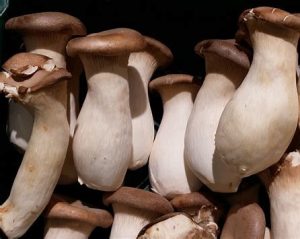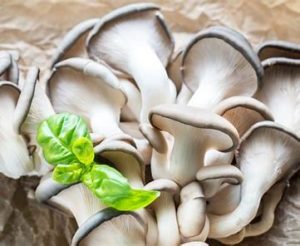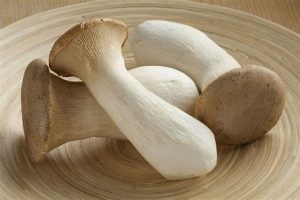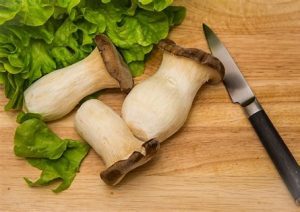King Oyster Mushrooms: Nutrition Facts and Benefits
King oyster mushrooms are one of the world’s most popular culinary mushroom varieties.
However, what do they offer regarding nutritional benefits?
This article examines the nutritional properties and potential benefits of king oyster mushrooms.
What Are King Oyster Mushrooms?
King oyster mushrooms, also known by their scientific name ‘Pleurotus eryngii,’ are native to the Mediterranean, North Africa, and parts of the Middle East and Asia.
As shown in the above image, king oyster mushrooms have a long and thick white stem and a brown cap that is commonly around two inches (5 cm) wide. They are among the largest edible mushrooms.
click here to buy magic mushroom in the usa
The mushrooms are particularly popular in East Asian cuisine and feature in various dishes from this region of the world.
In recent times, king oyster mushrooms have had worldwide distribution and production, and they are widely available in large grocery stores.
In addition to their ‘king oyster’ name, the mushrooms have several other nicknames, including ‘king trumpet.’
Taste and Texture
King oyster mushrooms have an interesting taste and texture.
Despite being relatively mild by themselves, they have a refreshing earthy flavor. The mushrooms also absorb flavors from dishes in which they are incorporated.
King oysters have a chewy and meaty texture, somewhat resembling squid.
Since the mushrooms are thick and have a high water content, they are also quite juicy.
Key Point: King oyster mushrooms are a large and thick mushroom variety with a chewy texture and enjoyable taste.
Nutrition Facts
The following table and lists display the full nutritional values for king oyster mushrooms per 3.5 oz (100 gram) serving.
The source of nutritional data is the USDA’s FoodData Central database. Daily values have been calculated using the FDA’s recommended daily values, based on a 2000-calorie diet (3, 4).

| Name | Amount | % Daily Value (DV) |
| Calories | 46 kcal | |
| Carbohydrates | 8.5 g | 3.1% DV |
| Fat | 0.31 g | 0.4% DV |
| Protein | 2.41 g | 4.8% DV |
Table 1: Basic nutrition facts for king oyster mushrooms per 3.5 oz (100g) serving
As shown in the table, king oyster mushrooms are low in calories. They provide a small to moderate level of carbohydrates and a low level of fat and protein.
Unfortunately, the USDA data does not provide the full nutritional breakdown for carbohydrates (fiber and sugar) and fat (saturated, monounsaturated, and polyunsaturated).
Vitamins
- Biotin: 36.7% DV
- Niacin (vitamin B3): 40.3% DV
- Riboflavin (vitamin B2): 18.5% DV
- Thiamin (vitamin B1): <1% DV
- Vitamin B6: 0.8% DV
- Vitamin D: 0.4% DV
King oyster mushrooms provide a significant source of biotin, niacin, and riboflavin.
These B vitamins play a role in the metabolism of food and contribute to the immune system (5, 6, 7).
Minerals
- Calcium: 0.2% DV
- Copper: 5.2% DV
- Iron: 1.9% DV
- Magnesium: 3.2% DV
- Manganese: 3.9% DV
- Phosphorus: 7.2% DV
- Potassium: 6.3% DV
- Selenium: 2.2% DV
- Sodium: <0.1% DV
- Zinc: 5.7% DV
King oyster mushrooms provide a broad range of essential minerals in relatively small to moderate amounts.
Water Content
King oyster mushrooms have a high water content; they are 88% water by weight.
Key Point: King oyster mushrooms are primarily a source of water and carbohydrates and only contain small amounts of protein and fat. Among the vitamins and minerals they contain, the mushrooms offer a significant amount of riboflavin, niacin, and biotin.
Potential Benefits of King Oyster Mushrooms
There has been a lot of research on king oyster mushrooms, shiitake mushrooms, and mushrooms in general.
However, much of this research has focused on high-strength extracts used in in-vitro studies (sometimes referred to as “test tube” studies). As a result, it isn’t easy to ascertain how relevant findings from this type of study are to human health.
This section examines some potential benefits of king oyster mushrooms based on the compounds they contain, animal research, and study findings from trials using human participants.
1) May Help Improve Blood Sugar and ‘Fullness’ Levels
A randomized controlled crossover trial published in 2022 recruited 19 participants to examine the postprandial (post-meal) effects of king oyster mushrooms on blood sugar levels and hunger (8).
Participants consumed two different meals at different points; one containing king oyster mushrooms and a control meal matched for calories and macronutrients.
After each meal, blood tests were taken every thirty minutes until three hours after the meal.
Notably, the participants had a lower blood sugar response after the meal containing king oyster mushrooms. Additionally, levels of a ‘hunger hormone’ called ghrelin were lower after the king oyster meal alongside higher ratings of self-perceived fullness and a lower desire to eat.
Key Point: Based on a small randomized controlled trial, king oyster mushrooms may potentially have a blunting effect on blood glucose levels after a meal. The mushrooms may also lower hunger levels and decrease ghrelin levels.
2) May Help To Lower LDL Cholesterol Levels (Weak Evidence)

Two studies from 2011 and 2020 suggest that king oyster mushrooms may impact LDL cholesterol (LDL-C) levels.
In one study, researchers fed rats with high cholesterol a powdered king oyster mushroom supplement for six weeks. Notably, the king oyster-supplemented group had a 62.5% reduction in LDL-C compared to rats not given the supplement (9).
Additionally, a 2020 study examined the effect of a polysaccharide extract from king oyster mushrooms on mice fed a high-fat diet. Polysaccharides are a type of carbohydrate found within the mushroom. Interestingly, compared to mice who did not receive the supplement, the mice fed king oyster polysaccharides had less body weight gain, and total cholesterol and LDL-C levels decreased (10).
The researchers noted the reason for this was likely that the bioactive polysaccharides extracted from king oysters improved the gut bacteria balance of the mice and increased the excretion of fats into feces (10).
It is important not to read too much into these animal studies. The results were in mice rather than humans and using high-strength extracts rather than whole mushrooms.
Thus, any potential benefit of king oyster mushrooms lowering LDL-C levels requires confirmation by clinical trials in human participants.
Key Point: Low-level evidence from animal studies suggests that king oyster mushrooms and the compounds they contain are capable of lowering LDL-C. This effect has not been confirmed in humans.
3) High Levels of Ergothioneine
King oyster mushrooms are a significant source of a unique amino acid called ergothioneine (11).
There are relatively few dietary sources that provide high levels of ergothioneine, and the compound is being investigated for its potential benefits for human health (12, 13, 14).
Recent research has established that blood levels of ergothioneine tend to fall with age. Also, some studies have noted that low levels appear to be associated with several chronic diseases and cognitive decline (15, 16, 17).
Ergothioneine also sells as a supplement; supplementary doses tend to be less than 30 mg (18).
Interestingly, this shows that king oyster mushrooms provide what is considered to be a supplementary dose of ergothioneine; the mushrooms contain 24 mg of ergothioneine per 100 grams of fresh weight (3).
However, research on ergothioneine is in its infancy, and there are a lot of unknowns at this stage.
This review entitled ‘Ergothioneine, recent developments‘ discusses the compound in more detail. Notably, the review notes that: “randomized placebo-controlled clinical studies are needed to establish any human therapeutic benefits.”
Key Point: King oyster mushrooms are a rich source of ergothioneine, a type of amino acid that may have benefits for human health.
How To Use King Oyster Mushrooms
There are many different ways in which we can use king oyster mushrooms.
The mushrooms work well in stir-fries, curries, and soups, absorbing flavors from the respective dish.
Additionally, stir-frying king oyster mushrooms alone, sliced in half, is relatively quick and easy, and the finished cooked mushrooms taste good.
Due to their large size, grilling these mushrooms is possible too.

Marinating them before grilling adds to the taste, and a marinade including ingredients such as those below can work well:
- Soy sauce
- Sesame sauce
- Garlic
- Ginger
- Chives
Here are some pictures of what king oyster mushrooms look like after cooking:
If not, most Asian market stores should have them for sale, particularly those that focus on selling Chinese, Japanese, and Korean foods.
King oyster mushrooms are edible fungi known for their seafood-like flavor and meaty texture. But many people might not know these delicious mushrooms also have significant health benefits, such as reducing cholesterol levels and helping with diabetes.
We’ve done our best to gather all the information you need to know about king trumpets—from understanding their health benefits and picking them out at the grocery store (or out in the wild) to cooking with them for a delicious meal.
What are king oyster mushrooms?
The king oyster mushroom, scientifically known as Pleorotus eryngii (also sometimes spelled as Pleurotus eryngii), is an edible fungus native to Europe, Asia, and Africa. It’s one of the biggest species in the oyster mushroom family—a group of fungi named after their lack of stipe.
The king trumpet is one of the most popular mushroom choices in the world, partly due to its fantastic flavor but also due to its lax growth conditions. It has several different nicknames, which include:
- King trumpet mushroom
- Boletus of the steppes
- French horn mushroom
- Trumpet royale
P. eryngii naturally grows on the buried roots of hardwoods such as maples, willows, and beeches. The size of each specimen will mostly depend on the amount of nutrients each tree can provide. This makes it a highly adaptable mushroom and an ideal starting point if you want to grow your own mushrooms at home (1).
Most fungi lovers agree that king oyster mushrooms taste like seafood (specifically like abalone or scallops) due to their savory umami flavor. They also have a chewy, meaty texture that makes them the ideal choice for anyone looking to replace meat and other animal-based products.
However, not many people know that king trumpet mushrooms can also be highly beneficial for human health. Researchers suggest these delicious fungi have cholesterol-lowering, antidiabetic, and antiobesity properties (2) (3).
How do king trumpet mushrooms look?
King oyster mushrooms are the largest species in the oyster fungi family, with a 3–12 cm (1.1–4.7 in) cap and a 3-10 cm (1.1-3.9 in) white stem. The cap’s edges are initially convex, later flattening down until they start rolling inwards—which gives king oysters their characteristic funnel look. The grey gills are thin and distant from each other.
Usually, cultivated king trumpets grow larger than wild-picked ones. In nature, you can find this species growing alone or in small groups of a handful of specimens. Its spore print is completely white (1).
What are the varieties of king oyster mushrooms?

There are at least five varieties of king oyster mushrooms, although the literature is rather limited and hard to access. As such, it’s hard to tell exactly what distinguishes these strains from each other. The five recognized varieties are:
- P. eryngii var. eryngii
- P. eryngii var. ferulae
- P. eryngii var. tingitanus
- P. eryngii var. elaeoselini
- P. eryngii var. nebrodensis
From what we could gather, the varieties mostly have to do with where the species grows. For example, the traditional P. eryngii var. eryngii is closely linked to king oysters growing in France while P. eryngii var. Nebrodensis is associated more with Sicily in Southern Italy (4).
We know this can be a little confusing—but not to worry. No evidence suggests that these varieties have significant differences when it comes to nutritional or therapeutic properties Still, oyster mushrooms are one of the biggest families in the edible fungi world, encompassing unique species such as pink oysters and Indian oysters, so you’ll find some variations in flavors, nutritional values, and health benefits.
History of king oyster mushrooms
Experts theorize that king oysters go way back in history. While the first official mention of the species only dates back to the 1800s, there’s evidence to support that some ancient American and Asian cultures used these fungi.
A comprehensive review released in 2000 states that Ancient Mexicans, for example, were frequent consumers of oyster mushrooms. Mexicans have over 100 different nicknames for the species of the oyster family and commonly use them to treat sexual dysfunction and constipation. As such, it’s not crazy to think that king oysters were a part of the Aztecs’ menu (5).
Similarly, there’s some evidence to support Ancient Egyptians using all manner of mushroom for their medicinal properties and culinary value. At the time, they believed that mushrooms were a gift of the gods—an absolute delicacy reserved only for the highest of nobles (6).
The first official mention of the species dates back to 1815 when Swiss botanist Augustin Pyramus de Candolle first described it. Later, it was revised by the famous mycologist Elias Fries—although we couldn’t find the exact date of the revision.
Experts state that mass production of king oyster mushrooms (and many other species of the oyster family) began during World War I. Due to the greater demand for food, mycologists started working on highly effective cultivation techniques for Pleorotus species, allowing them to be distributed all around the world (7).